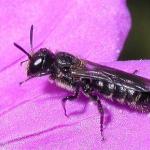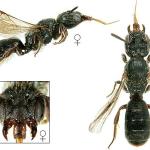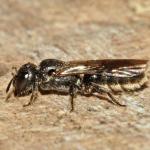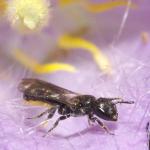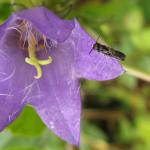Apis florisomnis minima CHRIST 1791; Apis florisomnis THOMSON 1872
A predominantly black bee; the abdomen is narrow and cylindrical, which is probably an adaptation to using small-bore beetle burrows as nest sites. The males have the final segment of the abdomen modified to form a two-pronged peg which is used to hold on inside flowers during the night or in poor weather, which gives a good method for recording the bees under such conditions.
This is a species which may be abundant in gardens in Southern and Central England, but is curiously absent from Wales, Scotland and the Channel Islands. It is widespread in Europe and is also found in North Africa.
This bee is not regarded as being scarce or threatened.
Although most often noticed in gardens it is also frequent, though easily overlooked, visiting Campanula species in the wild.
June to August. Univoltine.
Nests in small-bore beetle burrows, often using woodworm-infested planks on garden sheds and fence-posts.
A wide range of Campanulaceae including sheep’s-bit (Jasione montana) (M Edwards), also Geraniaceae.
No parasites are recorded for this species in Britain. Author of profile: M Edwards.
Profile written:
Proofed: January 2012


